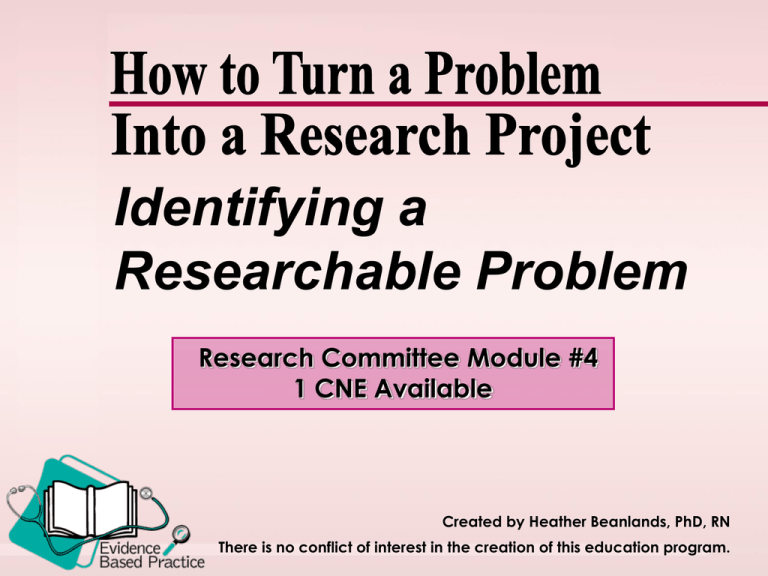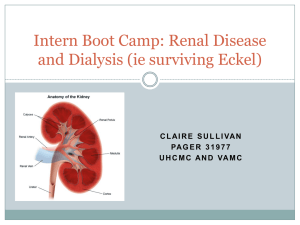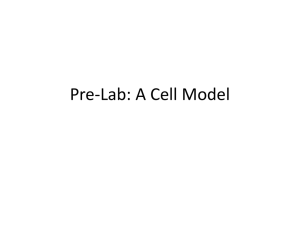
Identifying a
Researchable Problem
Research Committee Module #4
1 CNE Available
Created by Heather Beanlands, PhD, RN
There is no conflict of interest in the creation of this education program.
Objectives
1. Describe the phases of the
research process.
2. Identify sources of research
problems.
3. Describe the process of
formulating a research
problem.
4. Describe the elements of a
“researchable” problem.
What is research?
A systematic process of inquiry
Goal directed
Focused on uncovering new
knowledge to help understand
phenomena, answer questions,
or address problems
What makes research
nursing research?
Nursing research is
“a scientific process that
validates and refines existing
knowledge and generates new
knowledge, which directly and
indirectly influences nursing
practice”
(Burns & Grove, 2005, p. 3)
Approaches to
research in nursing
Quantitative Research
Used to describe or test relationships among
variables or to evaluate the effect of one variable on
another
Variables are “measured” using standard data
collection tools and data are numerical (numbers)
Qualitative Research
Used when little is known about a phenomenon
Focused on developing a rich, holistic description of
phenomena
Data are non numerical (i.e., dialogue, observation,
etc.)
Phases of the research process
Thinking
Informing
-disseminating results
(journal articles,
presentations etc.)
Analyzing
- analyze data and
interpret findings
-identifying
problem & purpose
-reviewing literature
Planning
-Choosing study
design & planning
approach to sample,
data collection etc.
Implementing
- Recruiting
participants &
collecting data
(Norwood, 2000)
Identifying
the research problem
Critical first step in research process
Directs the entire research process and
decisions you will make
Being clear about the problem you wish
to address will assist in focusing your
study
Start with a broad area of
interest/concern which is gradually
refined until you have a research
problem
Steps in identifying
a research problem
1. Outline areas of interest
Read about your
interests
Observe your
environment
2. Choose a topic
Talk to your
Colleagues
Find out what
others are
doing
Be curious
Ask questions
3. Narrow your topic
4. Identify a research problem
5. Identify the purpose for your study
Areas of Interest
Start with an area you are familiar with
Begin broadly and think of things that
interest you in your practice
• What do you find frustrating?
Perplexing?
• What do you think works well?
What could be improved?
Be creative and try to “think outside the
box”
Brainstorm about general areas of interest
Write down all your thoughts and ideas
Potential topics:
Some examples
Quality of life after kidney transplant
Body image concerns for adolescents
with CKD
Role of the multidisciplinary team in
managing stages 1-3 CKD
Experiences of people with early CKD
Foot care interventions for people
with diabetes on dialysis
Safety issues for elderly dialysis
patients
Choosing your topic
Choose one area of interest
as a topic you will focus on
To help you select a topic consider:
1.
2.
3.
Significance/relevance: Is this an
important problem for nurses/nursing
practice? Is it timely?
Gaps: What is already known about the
topic? Have others already examined
this issue? Is more research needed?
Interest: Is this something you would
like to explore further?
Narrowing your topic
• Refine your topic by becoming more
specific about what you are interested in
• Pose some questions about your topic to
help you narrow your focus
• Polit & Beck (2008) suggest some question
stems to use to assist in refining your topic
–
–
–
–
–
–
What is going on with….
What is the meaning of…
What influences or causes…
What is the process by which….
What factors contribute to….
How effective is…..
Narrowing your topic:
Choosing a researchable question
• Narrow down the questions you have
posed by eliminating those that are not
researchable
• According to Brink & Wood (2001)
researchable questions are
– Focused on fact not opinion – answers will
help to describe or explain a phenomenon
– “Now” questions - deal with current,
significant issues
– Relevant - Generate useable information
– Action oriented - usually require you to do
something and provide direction for the rest of
the research process.
Identifying
the research problem
• To decide on your research problem
consider the potentially researchable
questions about your topic you identified
earlier
• Select one that you would like to explore
in more depth
• In choosing your focus consider
– Your interests
– The literature
– Feasibility of studying the problem
Identifying
the research problem
To finalize the research problem consider:
Significance
“Researchability”
Nature of the problem
Ethical considerations
Feasibility
Time
Funding for the study
Researcher expertise
Availability of participants
Availability of facility and equipment
(Polit & Beck 2008))
Identifying the study purpose
• Clear, concise statement of the
goal, aim, focus, or objective of
the study (Burns & Grove, 2005)
• Should include a description of
– “what” = variables or phenomena of
interest
– “who” = sample or participants
– “where” = setting
Moving from the problem
to a research project: Next steps
• Reviewing and critiquing the literature
related to your problem
– Find out what is known
– Identify approaches to studying the problem
– Consider theoretical approaches to studying the
problem
– Further refine your problem & purpose
• Move to the planning phase of your
study
Summary
• Identifying a researchable problem is
the first step in the research process
and ultimately guides the remaining
steps.
• Research problems describe
knowledge gaps that need to be
addressed in order to understand or
improve practice.
• Research problems can be derived
from observations, dialogue with
others, and/or the literature.
Summary (cont.)
• A good research problem is relevant, current
and “researchable.”
• Choose a problem that is of interest to you.
• Identifying a “researchable” problem is a
creative process that requires time for
reflection.
• Seeking input from others and referring to the
literature will help to narrow your problem
down.
• A clear and focused problem statement
provides direction for the next steps of the
research process - the planning phase.
Example:
Identifying a research
problem
Area of interest
• The number of adults over 65 on
dialysis is growing
• Aging is often associated with
physical and mental changes that may
put older persons’ safety at risk
• Physiological and psychosocial
stressors associated with dialysis may
also place people at risk for safety
concerns
• Elderly people on dialysis may
therefore be particularly vulnerable to
safety issues.
Narrowing the topic
• Consider the potential topic “Safety
issues among elderly on dialysis”
• Take a minute and brainstorm
questions about this topic
• What do you think needs to be known
about this topic?
• Write down everything that comes to
mind - don’t rule anything out at this
point
Safety issues for elderly on dialysis:
Example Questions
1.
2.
3.
4.
5.
Is safety an important concern for
elderly on dialysis?
What are the common safety issues for
elderly on dialysis?
Are there different safety issues for
elderly on peritoneal versus
hemodialysis?
How common are falls in elderly
dialysis patients? What factors
contribute to falls?
Should nurses assess safety issues
among elderly dialysis patients?
Identifying
researchable problems
In reviewing the questions from the previous slide
• Question # 2 “ What are the common safety
issues for elderly on dialysis?” was selected
as the focus.
• Questions # 3 & 4 have potential but may
require us to answer question 2 first.
• Questions # 1 and 5 were excluded because
they elicit “yes/no” answers or opinion and
therefore are not researchable.
What are the safety concerns among
elderly on dialysis?
A brief review of the literature focusing
on “safety” “dialysis” and “elderly”
uncovered
Research focusing on safety of various
medications and dialysis delivery methods
among all age groups
No literature was found that examined safety
concerns unique to older people on dialysis
Therefore, this was identified as a potential gap
in the literature and a decision was made to
continue to focus on this problem
What are the safety concerns among
elderly on dialysis?
To focus your topic further pose additional
questions to help you be clear on what you are
interested in. For example:
– What is meant by safety concerns?
– How do you define “elderly”?
– Whose perspective are you interested in the patient?
Family? Nurses? Other health care professionals?
– Are you interested in safety issues in the dialysis
unit? At home?
– Are you interested in safety concerns for elderly on
all forms of dialysis?
Problem statement & purpose
• Elderly patients on dialysis may be at
increased risk for physical injury while at
home as result of the aging process and the
consequences of CKD and dialysis.
• However, little is known about safety
concerns for elderly individuals on dialysis
who live at home
• Therefore, the purpose of this study is to
explore concerns that individuals over 65 on
all forms of dialysis have about their safety
while at home.
References
Burns, N., & Grove, S. (2005). The practice of
nursing research: Conduct, critique and
utilization (5th ed.). St. Louis:
Elsevier Saunders.
Leedy, P., & Ormrod, J.E. (2005). Practical
research: Planning and design (8th ed.).
New Jersey: Pearson Prentice Hall.
Norwood, S. (2000). Research strategies for
advanced practice nurses. New Jersey:
Prentice Hall
References
Polit, D., & Beck, C.T. (2008). Nursing
Research: Generating and asssessing
evidence for practice (8th ed.).
Philadelphia: Lippincott Williams and
Wilkins.
Wood, M., & Ross-Kerr, J. (2006). Basic steps
in planning nursing research: From
question to proposal (6th ed.). Boston:
Jones and Bartlett.












